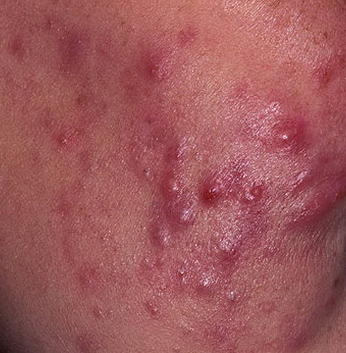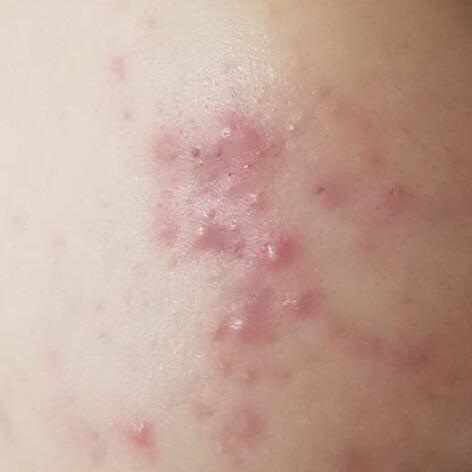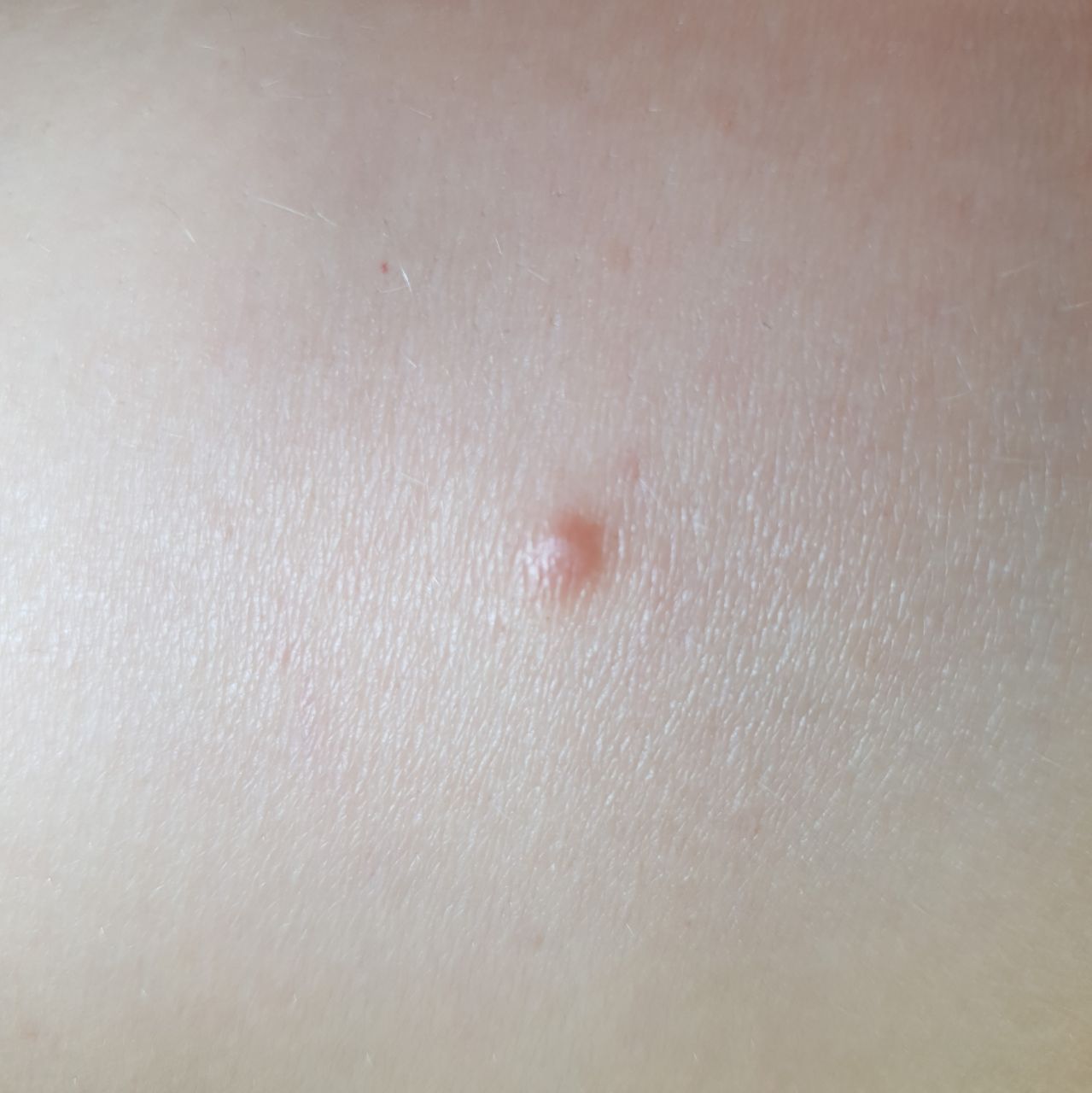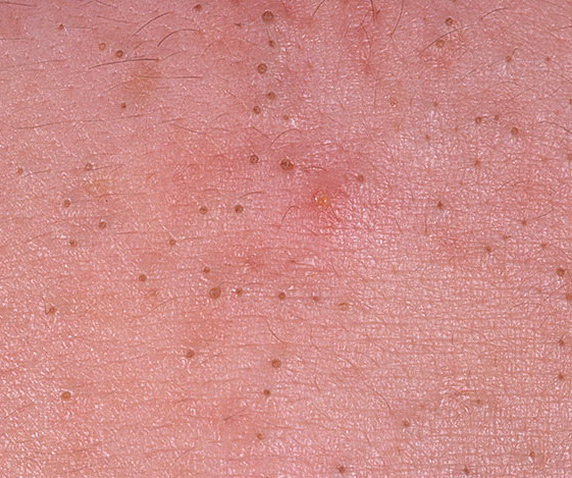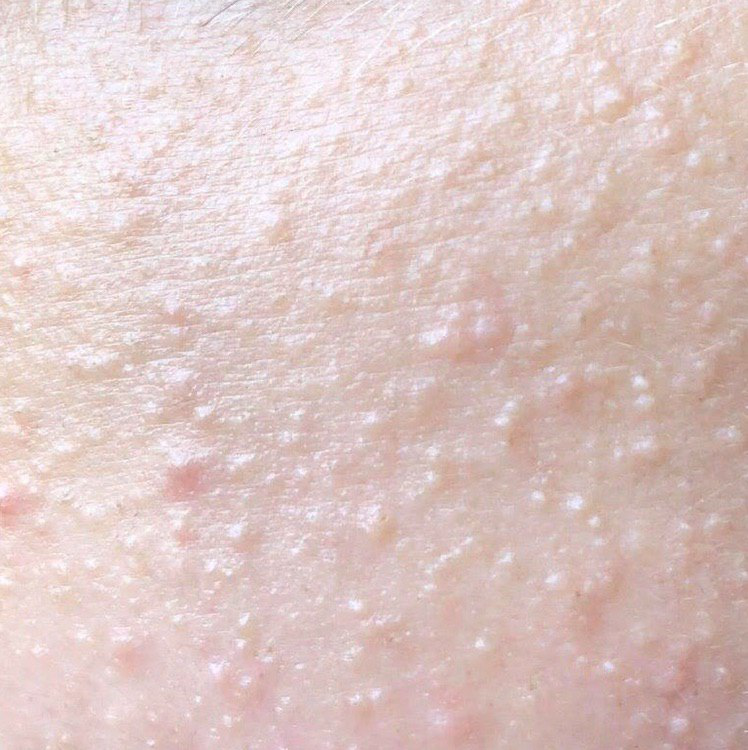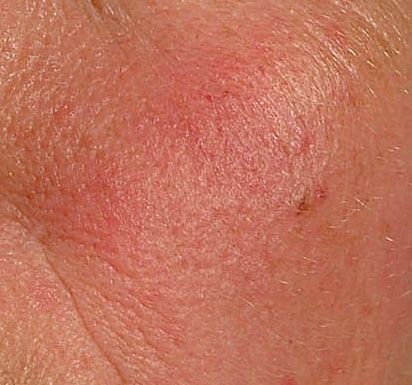Acne is a common skin condition characterized by clogged skin pores, pimples, and sometimes deeper cysts or nodules. Rosacea is a chronic skin condition that causes redness, visible blood vessels, and sometimes thickening or pimples on the face. Miliums are small white cysts that usually appear on the face in the eye area.
💚 Low risk: A milium is low risk and is only an aesthetic problem.
⚠️ Medium risk: Acne and rosacea are usually not dangerous in the sense of life-threatening, but they can affect self-esteem and quality of life.
🚨 High risk: Due to the severity of the cystic acne process, it is recommended to consult a dermatologist.
💊 Treatment: Treatment and diagnosis of acne, rosacea and miliums depend on the severity. For acne, a dermatologist can make a diagnosis and offer treatment options, which may include topical medications, oral medications, or treatments such as laser therapy. Rosacea and milium should also see a dermatologist for diagnosis and treatment. The urgency depends on the severity of symptoms and the impact on quality of life.
💡 Skin Self-Exams tips: Skin self-examination allows you to monitor changes in acne, rosacea and milium. Examine your skin regularly for new or worsening elements, changes in size or appearance, and signs of infection. If you notice any alarming changes, consult a dermatologist.
